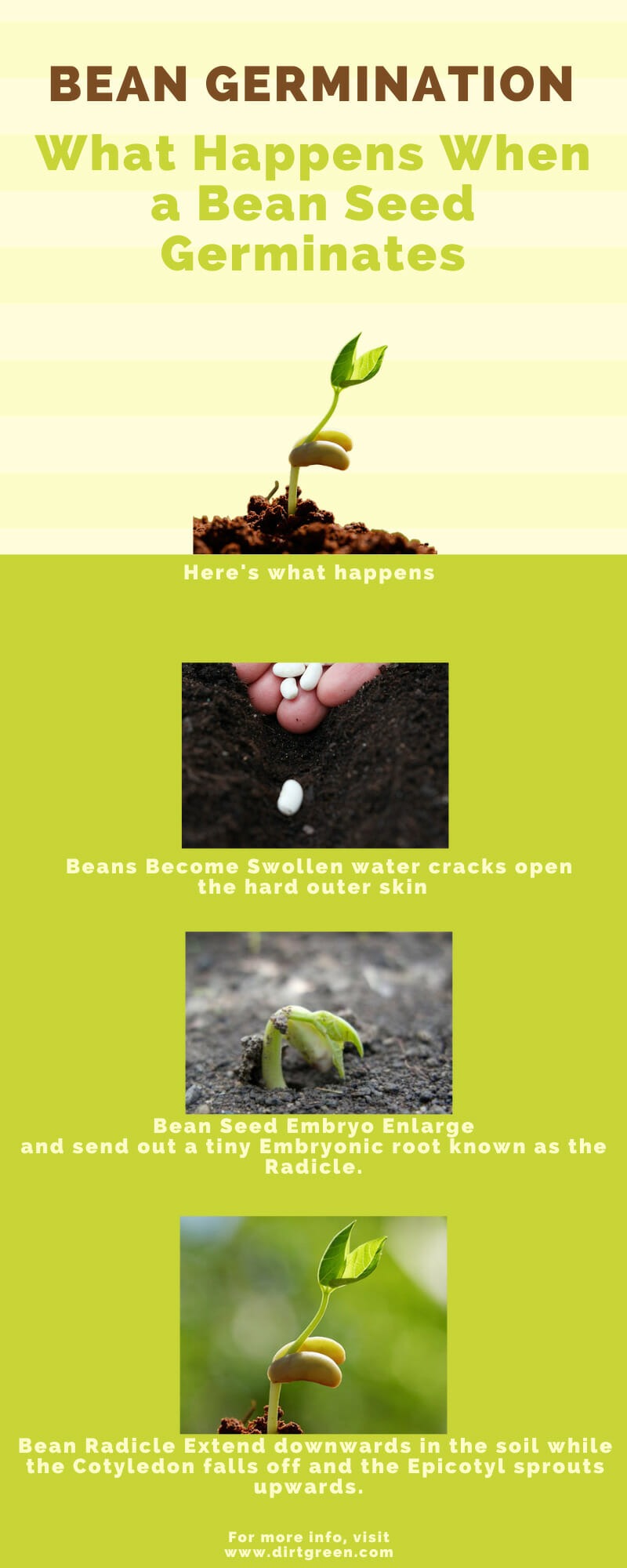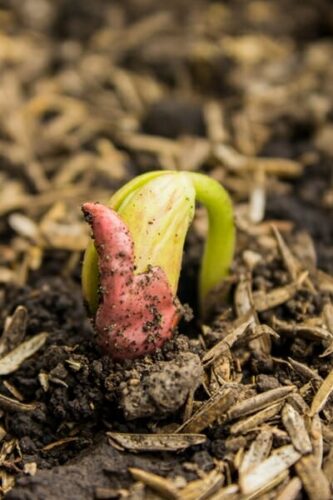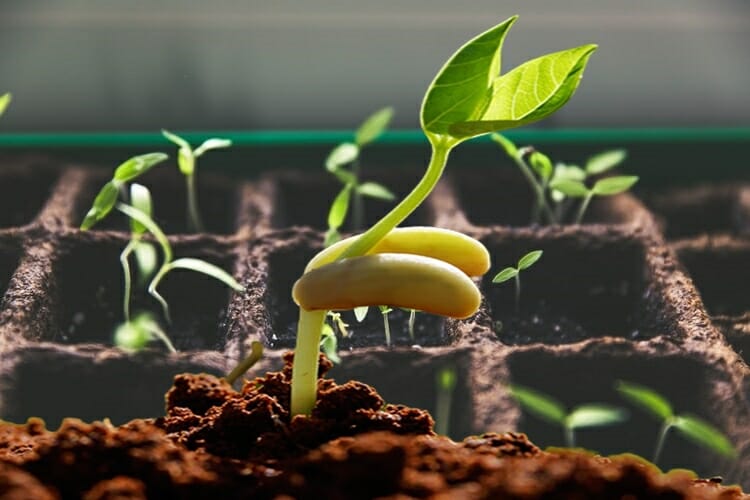How long does a bean seed take to germinate?
The time it takes for a bean to start its germination process is 5–10 days.
Beans can also grow without soil in a container of wet, moist paper towels.
The average germination time for beans in a container with a wet paper towel is approximately 3–5 days.

how long does it take for beans to grow
If you are conducting research on how long beans take to germinate, it’s very important to keep a few conditions in mind.
These include the temperature at which you are growing your bean. Whether or not you are using organic matter such as compost or within a moistened paper towel container.
How Long Does It Take Beans to Sprout?
The time it takes for a bean seed to start its sprouting process is approximately 7–10 days. However, not all beans are the same, and some bean sprouts might take up to 2 weeks to start sprouting.

how long does it take a bean plant to grow?
The reason why the sprouting time may exceed 10 days is due to its temperature. The cooler the temperature, the longer it will take the bean to sprout.
If you are sowing bean seeds in a starting cell, it is best to place them in warm temperatures such as 80–90 degrees Fahrenheit.
The warmer the temperature, the faster your beans will sprout and germinate. Cooler temperatures will delay the sprouting process of a bean seed.

How Long Bean Seed Take To Germinate
How Do You Quickly Germinate Beans?
The fastest way to germinate beans in starting cells is to place the starting cell trays in a shallow container filled with water.
Then, place the container with the starting cells that have shallow water at the bottom under a warm light in an area that is a bit warmer than room temperature.

What Happens When a Bean Seed Germinates?
Finally, cover the starting cell tray with a light see-through container to build up the warmth and speed up the beans’ germination process.
As soon as the bean germinates and sprouts its first leaves, the plant will need a lot of sunlight to grow.
If there is not enough light and heating, there are a few things you can do.
This is to create or build a reflection wall that will bounce light toward the germinating bean plant. Something that is similar to a greenhouse.
What Happens When a Bean Seed Germinates?
The process that takes place within bean seed germination is that the bean’s outer skin, known as the cotyledon, dissolves and opens when water enters the hard casing.
Then, the embryo will enlarge while it sends out tiny embryonic roots known as radicles in the soil.
Afterward, the radicle will reach down into the ground, and thus the cotyledon will sprout upwards and grow.
Then, the cotyledon will eventually fall off, leaving the epicotyl, which will become the shoot that forms the leaves and stems of the bean plant.
What Month Do You Plant Beans?
The most favorable time to plant bean seeds is during the months of May and June. It is ideal to sow your bean seeds from mid-May through June, when the temperature is warm.
The bean plant is a warm-season crop that needs at least 8 hours of sunlight per day. Most bean plants can grow in cooler temperatures; however, they will not produce as many bean pods as they would in direct sunlight.
Bean Planting techniques
When sowing bean seeds directly on the soil or in a starting cell, plant each seed approximately 1-2 inches deep, with no more than 2 seeds per hole or cell.
Also, each pair of seeds sown should be at least 6 inches apart for optimal growth in indirect sunlight.
Should I soak beans before planting?
Soaking beans before planting them overnight is one of the fastest ways to speed up the germination process of the plant.
It is ideal to soak your beans in warm water 24 hours before they are planted in a starting cell or on the ground.
The bean will become swollen overnight because it has soaked up water, which indicates a good sign that the seed will germinate.
If you plant your bean seeds directly in a starting cell or on the ground, the germination process will take longer.
Thus, some bean seeds may not germinate because they are not good. Also, any bean seed that floats up in the water may be a potential bad bean seed.
How much water does a bean seed need to germinate?
The amount of water a bean seed needs to germinate is 1/2 inch per day. At an early stage of germination, bean seed does not require much water to sprout or grow.
Once the bean plant germinates and sprouts upwards, a total of 1/2 inch of water per day should be enough.
During the plant growth and blossom stage, along with its pod enlargement, just ensure to water each day to supply the plant root intake.
What is the best fertilizer for beans in general?
The best fertilizer for beans or runner beans is liquid fertilizer. Each time you water the bean plant, liquid fertilizer should be applied to the main root of the plant.
Once the bean plant is mature enough and starts to blossom, switch over to tomato fertilizer. Apply the tomato fertilizer to your bean plant as instructed by the manufacturer.
Why are my bean seeds not germinating?

The reason why most bean seeds do not germinate comes down to two scenarios.
- The bean seed did not have enough moisture (water) in the soil; as a result, the bean seed died, and the germination process stopped.
- There might have been too much moisture in the soil, thus resulting in the bean seed rotting and dying because of too much water.
At the end of the day, beans are delicious and nutritious to eat as well as to grow. These are some of the considerations you should keep in mind if you want to know how long beans take to germinate and more.
I hope this post helped you find the answer you were looking for on the web. Feel free to drop a comment if you have any questions pertaining to beans and how to grow them.




